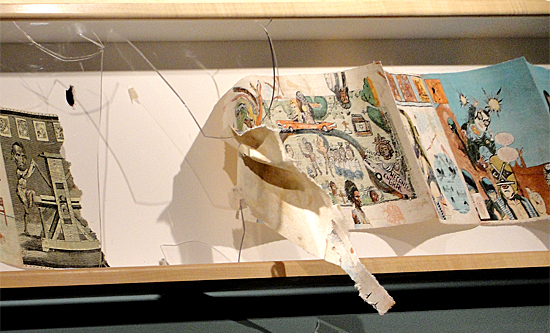 I would like to note that the following post is in no way an endorsement of the decision by a Colorado woman to smash up a piece of alleged modern art.
In fact, I don't think that the following New York Times story is all that bad.
I would like to note that the following post is in no way an endorsement of the decision by a Colorado woman to smash up a piece of alleged modern art.
In fact, I don't think that the following New York Times story is all that bad.
I am simply jumping in here -- in the wake of a post by the Divine Mrs. M.Z. Hemingway -- to conduct what I think will be a vivid thought experiment, this time in the context of truly elite media. I am simply asking if this Times story would have been handled in a different way if one word had been changed.
Ready? Here comes my version, with only one major change made throughout this excerpt.
Provocative Image of Muhammad Sets Off a Debate Punctuated With a Crowbar
LOVELAND, Colo. -- For once, the quaint museum on Lincoln Avenue was all quiet. A sign inside was the only indication of the recent trouble.
"This piece was destroyed by an act of violence and is no longer on exhibit," the sign read.
For weeks now, this bucolic northern Colorado city of just over 60,000, which has a vibrant arts community, has been bitterly divided over the controversial artwork that once sat in the empty display of the Loveland Museum Gallery where the sign now rests.
Some here interpreted the small image, which was part of a lithographic print exhibition by the San Francisco artist Enrique Chagoya, as showing Muhammad engaged in a sex act with another man, and demanded its removal. Others argued that Mr. Chagoya, an art professor at Stanford, had the right to create what he pleased. ...
The print itself, part of a series by Mr. Chagoya called "The Misadventures of Romantic Cannibals," shows the head of Muhammad, eyes rolled back, atop a mostly clothed woman's body. A man's head, tongue out, is near the woman's legs. The Spanish word "orgasmo" is displayed in the background. ...
Well, I don't think that I need to go on. The change is pretty obvious, is it not? I have simply substituted the Prophet Muhammad for Jesus Christ.
Obviously, this exhibit did not include a provocative image of Muhammad of this kind. That would be considered highly offensive to Muslims and the leaders of the museum would never have allowed that. I dare say that the Times team would have assumed that this work was, in fact, an improper attack on Islam. At the very least this issue would have been debated, with articulate voices on both sides.
Here's my main point: Since this is a story about a provocative work of art that would be seen as offensive by many if not most Christians, especially Catholics in the context of the American Southwest and the Rockies, it is interesting to ponder whether the news coverage of this exhibit and the attack would be framed in the same way if the story was about an offense to Islam.
To cut to the chase: Readers get to hear from a Catholic leader who believes that the exhibit was, in fact, offensive. That is an important voice. However, this article assumes that his is a voice from the "conservative" town that has rejected the show. He is anti-art, you see.
Last week, a local deacon began to help organize protests outside the museum, and last Tuesday people packed a City Council meeting to speak out on the exhibit. Mr. Klassen estimated that most in attendance were opposed to the image.
The Rev. Ed Armijo, a deacon at St. John the Evangelist Catholic Church in Loveland, said: "It is deeply offensive to see our Lord depicted that way. It is our position that this is not art. It's pornography."
Nevertheless, Mr. Armijo said he was "devastated" by Ms. Folden's actions. "She doesn't live in our city," he said.
So, if the work at focused on Muhammad, would the Times have offered the same essentially pro-art tone, with no other questions asked or strongly implied?
Just asking.
Photo: After the attack, from the SharksInk website's offerings of the work of Enrique Chagoya.
